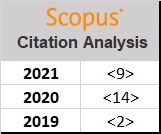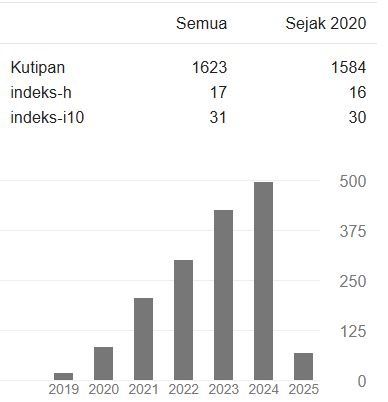Identifying the Factors of Online Game Acceptance Using Technology Acceptance Model
DOI:
https://doi.org/10.24002/ijis.v4i1.4727Keywords:
online games, students, technology acceptance modelAbstract
In the last two decades, many companies create online games. Online game is a game that is connected to the internet, where players can play and communicate with other players in different places at the same time. There are many types of game, such as adventure, strategy, cooking, make up, and so on. That is why a lot of people love to play online game. This study tries to identify the factors that support online game acceptance by students of Atma Jaya Yogyakarta University, because many students at this university play online games. The method used for this analysis is Technology Acceptance Model, which has main construct, namely Perceived ease-of-use (PEOU), Perceived usefulness (PU), Attitude toward use (ATU), Intention to use (ITU) and Actual Use (AU), and additional variables of Social Influence (SI), Personal (P) and Excitement (E) added by researcher. The data obtained to conduct this analysis using a questionnaire addressed to students. There are eleven hypotheses that serve as a reference in analyzing the relationship between variables. Each variable proves that each of these variables has a significant relationship in online game acceptance.
References
Giandi, A. F. & Arifin, H. S. (2012). Perilaku Komunikasi Pecandu Game Online dengan Menggunakan Game Online. eJurnal Mahasiswa Universitas Padjadjaran, 1(1), 1-39.
Decision Lab. (2018). Pemain game online menurut usia, Retreived from https://lokadata.beritagar.id/chart/preview/pemain-game-online-menurut-usia-2018-1579509362.
Wu, J. H., Wang, S. C., & Tsai, H. H. (2010). Falling in love with online games: The uses and gratifications perspective. Computers in Human Behavior, 26(6), 1862-1871.
Yang, D. J., Chiu, J. Z., & Chen, Y. K. (2011). Examining The Social Influence on College Studies for Playing Online Game: Gender Differences and Implications. The Turkish Online Journal of Educational Technology, 10(3), 115-122.
Davis, F. D. (1986). A Technology Acceptance Model for Empirically Testing New End-User Information. Massachusetts Institude. Retrieved from http://en.scientificcommons.org/7894517
Ibrahim, R., Leng, N. S., Yusoff, R. C. M., Samy, G. N., Masrom, S., & Rizman, Z. I. (2017). E-learning acceptance based on technology acceptance model (TAM). Journal of Fundamental and Applied Sciences, 9(4S), 871-889.
Davis, F. D., Bagozzi, R. P., & Warshaw, P. W. (1989). User Acceptance of Computer Technology: A Comparison of Two Theoritical Models. Management Science, 35(8), 982-1003.
King, J. H. (2006). A Meta-Analysis of The technology Acceptance Model. Information & Management, 43(6), 740-755.
Hsu, C. L., & Lu, H. P. (2007). Consumer Behavior in Online Game Comunities : A Motivational Factor Perspective. Computers in Human Behavior, 23(3), 1642-1659.
Park, S. Y. (2009). An Analysis of The Technology Acceptance Model in Understanding University Student's Behavioral Intention to Use e-L:. Educational Technology & Security, 12(3), 150-162.
Schepers, J., & Wetzels, M. (2007). A Meta-Analysis of The Technology Acceptance Model: Investigating Subjective Norms and Moderation Effects. Information & Management, 44(1), 90-103.
Hsu, C. L., & Lu, H. P. (2004). Why do people play on-line games? An extended TAM with social influences and flow experience. Information & management, 41(7), 853-868.
Wu, J., & Liu, D. (2007). The Effects of Trust and Enjoyment on Intention to Play Online Games. Journal of Electronic Commerce Research, 8(2), 128-140.
Widjaja, S. (2014). Pengaruh Perceived Behavioral Control, Descriptive Norms, Perceived Playfulness Terhadap Satisfaction dan Loyalty Melalui Online Game Addiction Pemain Online Game Clash Of Clans DiSurabaya. Jurnal Ilmiah Mahasiswa, 3(2), 1-19.
Guo, Y., & Barnes, S. (2007). Why People Buy Virtual Items In Virtual Worlds With Real Money. ACM Digital Library, 38(4), 69-76.
Ha, I., Yoon, Y., & Choi, M. (2007). Determinants of Adoption of Mobile Games Under Mobile Broadband Wireless Access Environment. Information & Management, 44(3), 276-286.
Giannakos, M. N. (2013). Enjoy and Learn With Educational Games:Examining Factors Affecting Learning Performance. Computers and Education, 68, 429-439.
Ibrahim, R., Wahab, S., Yusoff, R. C., Khalil, K., & Jaafar, A. (2011). Student Perceptions of Educational Games in Higher Education:An Empirical Study. Issues in Information System, 12(1), 120-133.
Bourgonjon, J., Valcke, M., Soetaert, R., & Schellens, T. (2010). Students Perceptions About The Use of Video Games In The Classroom. Computers & Education, 54(4), 1145-1156.
Kim, G., Choe, D., Lee, J., Park, S., Jun, S., & Jang, D. (2013). The Technology Acceptance Model for Playing Console Game in Korea. International Journal of Computer Science and Network, 13(5), 9-12.
Downloads
Published
How to Cite
Issue
Section
License
Indonesian Journal of Information Systems as journal publisher holds copyright of papers published in this journal. Authors transfer the copyright of their journal by filling Copyright Transfer Form and send it to Indonesian Journal of Information Systems.

Indonesian Journal of Information Systems is licensed under a Creative Commons Attribution-NonCommercial 4.0 International License.

















